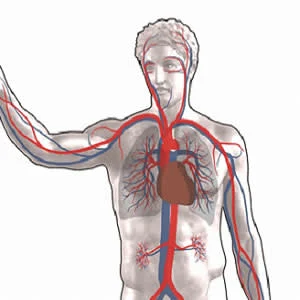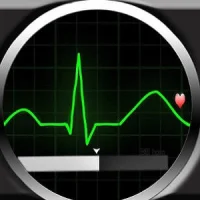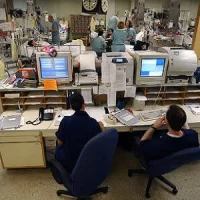Respiratory muscle weakness is common in critically ill patients, but the role of targeted inspiratory muscle training (IMT) in ICU rehabilitation strategies remains unclear. Now, a new systematic review suggests that IMT is feasible and well-tolerated in critically ill patients and improves both inspiratory and expiratory muscle strength. The impact of IMT on clinical outcomes however requires future confirmation, according to the review published online in Annals of the American Thoracic Society.
IMT targets the diaphragm and accessory inspiratory muscles with the goal of improving muscle strength and endurance. IMT techniques include threshold loading, resistive loading, and whole-body mobilisation; IMT regimens may vary widely in load, frequency, and duration. This kind of training has received relatively little attention in ICU rehabilitation programmes and the most recent ICU rehabilitation guidelines do not make mention of IMT.
Researchers performed this systematic review to describe the range and tolerability of published methods for IMT. They also sought to determine whether IMT improve respiratory muscle strength and clinical outcomes in critically ill patients. The review team searched MEDLINE, EMBASE, HealthStar, CINAHL, and CENTRAL (inception to September Week 3 2017) and conference proceedings (2012 to 2017) for randomised and nonrandomised studies of physical rehabilitation interventions intended to strengthen the respiratory muscles in critically ill adults.
A total of 28 studies (n=1185) were included in the analysis. IMT was initiated during early mechanical ventilation (8 studies), after patients proved difficult to wean (14 studies), or after extubation (3 studies), and 3 other studies did not report exact timing. Threshold loading was the most common technique. The researchers also found:
- IMT was feasible and there were few adverse events during IMT sessions.
- In randomised trials, IMT improved maximal inspiratory pressure compared to control and maximal expiratory pressure.
- IMT was associated with a shorter duration of ventilation and duration of weaning, but impact on these outcomes remains uncertain due to methodological limitations of the included trials.
According to the review team, a range of factors was explored to determine the effectiveness of IMT. The effect of IMT on inspiratory muscle strength did not vary significantly with the timing of IMT or the baseline severity of diaphragm weakness. They found that the increase in respiratory muscle strength tended to be greater when using threshold loading strategies compared to other techniques.
"Based on presently available evidence, we suggest that IMT is feasible and safe in mechanically ventilated patients. If clinicians wish to provide IMT, a strength-training regimen using threshold-loading such as that studied by Martin et al. would be a reasonable approach based on its tolerability and relatively minimal time requirement," the review team says.
Future trials should evaluate the effect of IMT on weaning from mechanical ventilation and on the long-term experience of ICU survivors in large, generalisable studies sufficient to confirm or refute clinically important benefits in patient-centred outcomes.
Source: Annals of the American Thoracic Society
Image Credit: Wikimedia Commons
References:
Vorona S et al. (2018) Inspiratory Muscle Rehabilitation in Critically Ill Adults: A Systematic Review and Meta-Analysis. Ann Am Thorac Soc. Published Online: March 27, 2018 https://doi.org/10.1513/AnnalsATS.201712-961OC
Latest Articles
ICU, Inspiratory muscle training, IMT
Respiratory muscle weakness is common in critically ill patients, but the role of targeted inspiratory muscle training (IMT) in ICU rehabilitation strategies remains unclear. Now, a new systematic review suggests that IMT is feasible and well-tolerated in










